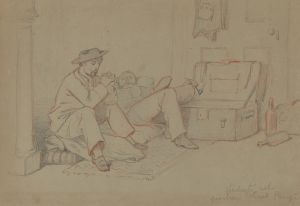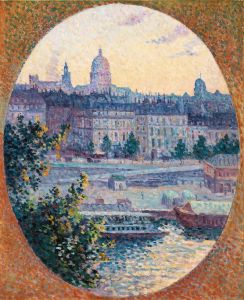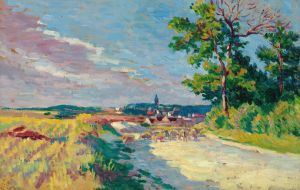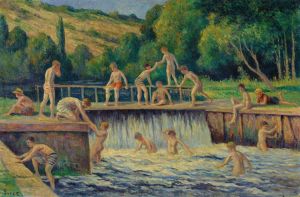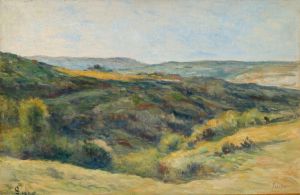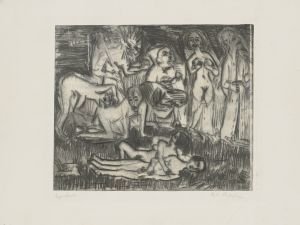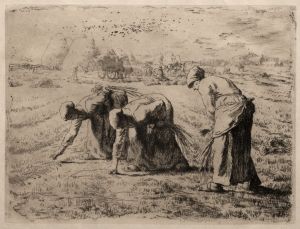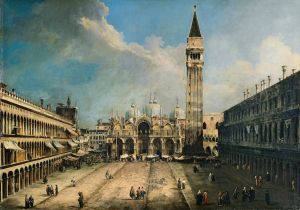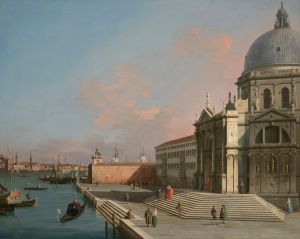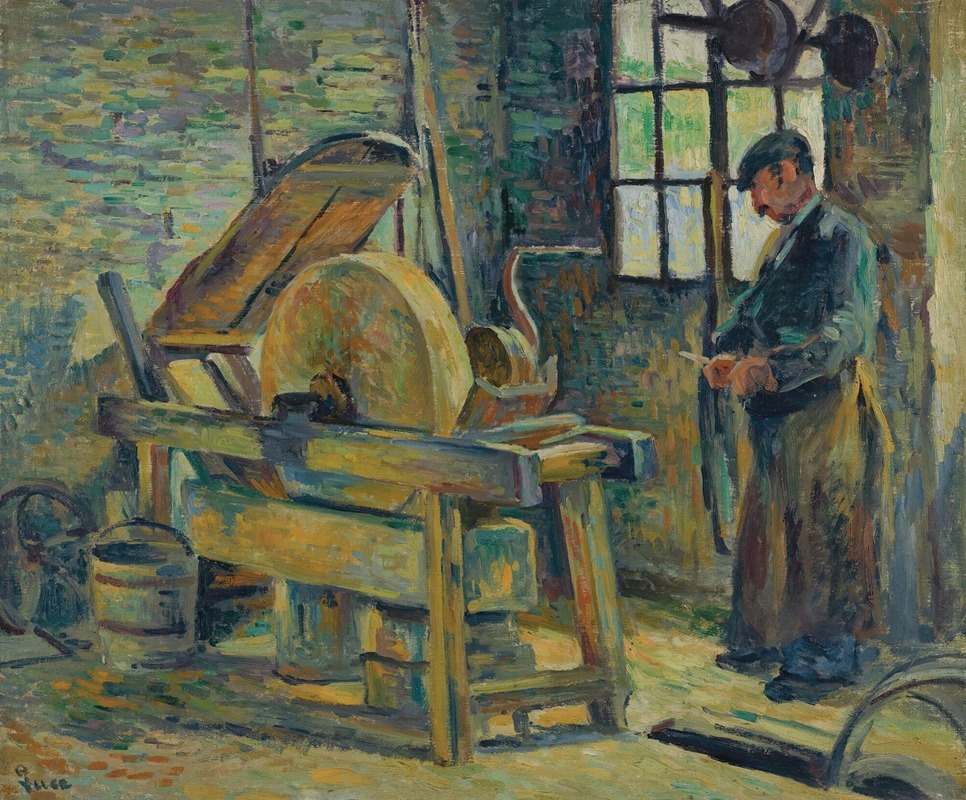
Le Rémouleur
A hand-painted replica of Maximilien Luce’s masterpiece Le Rémouleur, meticulously crafted by professional artists to capture the true essence of the original. Each piece is created with museum-quality canvas and rare mineral pigments, carefully painted by experienced artists with delicate brushstrokes and rich, layered colors to perfectly recreate the texture of the original artwork. Unlike machine-printed reproductions, this hand-painted version brings the painting to life, infused with the artist’s emotions and skill in every stroke. Whether for personal collection or home decoration, it instantly elevates the artistic atmosphere of any space.
Maximilien Luce's painting "Le Rémouleur" (The Knife Grinder) is a notable work from the French artist, who was an important figure in the Neo-Impressionist movement. Born in 1858, Luce was initially trained as an engraver before turning to painting, where he became associated with the Pointillist technique pioneered by Georges Seurat and Paul Signac. Luce's works often depicted scenes of everyday life, labor, and the working class, reflecting his socialist beliefs and commitment to social realism.
"Le Rémouleur" is an exemplary piece that captures Luce's interest in the lives of ordinary people. The painting portrays a knife grinder at work, a common sight in the streets of Paris during the late 19th and early 20th centuries. The knife grinder, or "rémouleur," is shown diligently sharpening a blade on his grinding wheel, surrounded by the tools of his trade. The composition is both dynamic and intimate, providing a glimpse into the laborious yet essential work of this tradesman.
Luce's use of the Pointillist technique is evident in "Le Rémouleur." This method involves applying small, distinct dots of color to the canvas, which blend together when viewed from a distance to create a cohesive image. The technique allows for vibrant color contrasts and a sense of luminosity, which are hallmarks of Neo-Impressionism. In this painting, Luce employs a palette of earthy tones and muted colors, reflecting the gritty reality of the knife grinder's environment.
The painting also demonstrates Luce's skill in capturing light and movement. The knife grinder's focused expression and the motion of his hands are rendered with meticulous detail, conveying the intensity and concentration required for his work. The background, though less detailed, provides context and depth, suggesting an urban setting where such trades were commonplace.
Maximilien Luce was deeply influenced by his political beliefs, and his art often conveyed his empathy for the working class. "Le Rémouleur" is no exception, as it highlights the dignity and perseverance of the knife grinder. Luce's commitment to social realism is evident in his honest and unidealized portrayal of the subject, emphasizing the importance of labor and the individuals who perform it.
Throughout his career, Luce remained dedicated to depicting scenes of everyday life and the struggles of the working class. His works are celebrated for their technical proficiency and their ability to convey powerful social messages. "Le Rémouleur" stands as a testament to Luce's artistic vision and his dedication to capturing the essence of human labor.
Today, Maximilien Luce's paintings, including "Le Rémouleur," are held in high regard and can be found in various museums and private collections around the world. His contributions to the Neo-Impressionist movement and his focus on social themes continue to be appreciated by art historians and enthusiasts alike.





